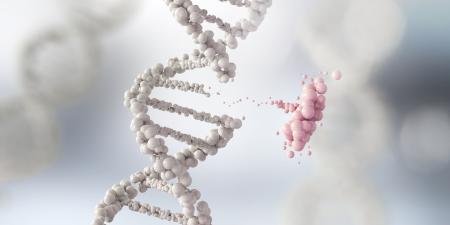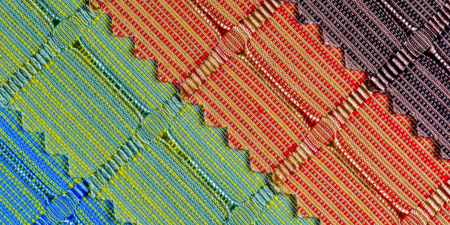Abstract
Gene editing technologies offer enormous potential for scientific advancement in fields such as medicine and agriculture, but their use also raises serious ethical and public policy concerns. Although advisory groups like the World Health Organization question whether certain forms of gene editing should be permitted, the US Patent Office routinely issues patents protecting this technology. This article considers what the term patented means, provides an overview of the US patent system, and discusses the scope of patentable subject matter under US patent law and the role of ethical, safety, and legal considerations in the patent examination process.
Introduction
On July 16, 2019, the University of California (UC) announced the issuance of US 10,351,878— the eighth US patent in UC’s portfolio of patents covering its gene editing technology known as CRISPR-Cas9.1 UC also announced that it anticipates the issuance of an additional 7 related patent applications.1 In a statement to the press, Eldora L. Ellison, lead patent strategist on CRISPR-Cas9 matters for UC, stated, “We are pleased to add this technique to our portfolio as yet another breakthrough that will ultimately enable more people to live healthier lives.”1
Ten days later, the World Health Organization (WHO) Expert Advisory Committee on Developing Global Standards for Governance and Oversight of Human Genome Editing released the following statement:
WHO … advises regulatory or ethics authorities to refrain from issuing approvals concerning requests for clinical applications for work that involves human germline genome editing. “Human germline genome editing poses unique and unprecedented ethical and technical challenges,” said WHO Director-General Dr Tedros Adhanom Ghebreyesus. “I have accepted the interim recommendations of WHO’s Expert Advisory Committee that regulatory authorities in all countries should not allow any further work in this area until its implications have been properly considered.”2
Could the statement released by the WHO potentially prevent or delay the issuance of UC’s 7 remaining CRISPR-Cas9 patents? The short answer is no, but to fully understand why, one needs to understand patentability requirements in the United States. This article will provide an overview of the US patent system and discuss the scope of patentable subject matter under US patent law and the role of ethical, safety, and legal considerations in the patent examination process with reference to gene editing.
What a Patent Is
Broadly defined, a patent is a document issued by a government to an inventor or an inventor’s assignee that grants the inventor or inventor’s assignee “the right to exclude others from making, using, selling, or offering for sale the invention” as described and claimed by the inventor.3 A government grants a patent in exchange for a full public disclosure of an invention. In return, an inventor or inventor’s assignee agrees that the invention will become part of the public domain after the patent term3 has elapsed. To obtain a patent, an inventor must file a patent application that describes the invention with enough detail to allow a person skilled in the claimed technology to be able to reproduce the invention. Although ethical, safety, and legal considerations are important in the innovation process, the expertise of patent examiners solely concerns the technical merits of an invention. It is important to note that a patent does not provide an inventor with an affirmative right to make, use, sell, or offer to sell the claimed invention. For example, if a product is illegal to make, use, sell, or offer to sell within a country, it will still be illegal for an inventor to do so regardless of patent status.
Patents serve both economic and social functions. Since an inventor is not obligated to publicly disclose an invention, governments grant patent rights to inventors as an economic incentive to publicly disclose scientific and technological innovations rather than maintaining them in secrecy. Governments likewise set patentability standards to encourage the development of certain technologies thought to benefit society and to increase the availability of new, useful products. Although governments can also theoretically discourage innovations potentially harmful to society by excluding detrimental areas of technology from patent protection, in practice, this is rarely done.
Nothing prevents the granting of patents on inventions that are illegal to make, use, or sell within the United States.
Qualifying as Patentable Subject Matter
Article I, Section 8, of the US Constitution grants that “The Congress shall have power to ... promote the progress of science and useful arts, by securing for limited times to authors and inventors the exclusive right to their respective writings and discoveries.”4 Under this authority, the US Congress promulgated federal patent law under Sections 1 to 376 of Title 35 of the US Code5 and established the US Patent and Trademark Office (USPTO). The USPTO implements these laws through creation and application of federal regulations as set forth in Chapter 37 of the Code of Federal Regulations6 and with agency guidelines provided to patent examiners in its Manual of Patent Examining Procedure (MPEP).7
The US patent system currently recognizes 3 types of patents: utility patents,8 design patents,9 and plant patents.10 Utility patents are the oldest and most common type of patent. To qualify for protection as a utility patent, the subject matter of an invention must be a “new and useful process, machine, manufacture, or composition of matter, or any new and useful improvement thereof,” as defined under Section 101 of Title 35 of the US Code.8 This section of the US Code serves as a gatekeeper for the patent office. If a patent examiner determines that the subject matter of a patent application fails to meet the standard set forth in Section 101 of Title 35 of the US Code, the patent application will be objected to and returned to the applicant. If the application does disclose eligible subject matter, the patent examiner will continue examination of the application. If the application satisfies the remaining requirements for patentability, the inventor will be granted a patent.
Judicial Interpretation of Useful
Although the language of Section 101 of Title 35 of the US Code has remained essentially the same since 1793, judicial interpretation and statutory limitations have changed the meaning of new and useful. Prior to 1903, a patent application could be objected to as not being useful if the claimed subject matter was immoral, unsafe, or illegal.11 Examples of such subject matter include “a new invention to poison people, or to promote debauchery, or to facilitate private assassination.”11
In 1903, the Seventh Circuit Court of Appeals rejected this interpretation of usefulness in Fuller v Berger, which examined the patentability of a bogus coin detector for use in coin-operated vending machines.12 In this decision, the court asserted that the definition of utility should not hinge on whether an invention might be used for pernicious purposes. Instead, the test of utility should be whether an invention is able to serve any beneficial purpose. If an invention can serve any conceivable beneficial purpose, the subject matter should be eligible for patent protection.
Since this decision, the US Supreme Court13 and the USPTO7 have reaffirmed that issues regarding ethics, safety, or legality are no longer considered relevant to an invention’s patentability. As stated by the Federal Circuit Court of Appeals in 1999:
The requirement of “utility” in patent law is not a directive to the Patent and Trademark Office or the courts to serve as arbiters of deceptive trade practices. Other agencies, such as the Federal Trade Commission and the Food and Drug Administration, are assigned the task of protecting consumers from fraud and deception in the sale of food products. Cf. In re Watson, 517 F.2d 465, 474-76, 186 USPQ 11, 19 (CCPA 1975) (stating that it is not the province of the Patent Office to determine, under section 101, whether drugs are safe). As the Supreme Court put the point more generally, “Congress never intended that the patent laws should displace the police powers of the States, meaning by that term those powers by which the health, good order, peace and general welfare of the community are promoted.”14
Since ethics, safety, and illegality are no longer considered in examining patent eligibility, nothing prevents the USPTO from granting patents on inventions that are illegal to make, use, or sell within the United States. For example, despite the fact that cannabis and cannabis-derived products have been and still are illegal to possess or sell under the Controlled Substances Act,15 the USPTO has issued hundreds of patents relating to cannabis and cannabis-related products since the 1940s. In fact, the US Department of Health and Human Services was granted a patent entitled “Cannabinoids as Antioxidants and Neuroprotectants” in 2003.16
Similarly, since ethical considerations are not relevant in determining patentability, it might be possible to obtain a patent on a new gene editing technique developed in violation of established ethical guidelines. For example, a patent application directed to a new method of human germline genome editing might violate the WHO’s new recommendation.2 If it did, the invention would not be disqualified as patentable subject matter under Section 101 of Title 35 of the US Code. Although it might not pass the scrutiny of other agencies, such as the US Food and Drug Administration, the USPTO would grant a patent on this technology as long as the application satisfies requirements for patentability as set forth in the statute.
Limits to the Scope of Eligible Subject Matter
Although the courts encourage and direct both reforms and limitations of Section 101 of Title 35 of the US Code to be pursued through legislation, only 2 such statutes currently exist. Both were the result of social and ethical concerns raised about the related technology patented. The first limitation was enacted in 1954 as part of the Atomic Energy Act, which provides a ban on patenting nuclear or atomic weapons. This act states, “No patent shall hereafter be granted for any invention or discovery which is useful solely in the utilization of special nuclear material or atomic energy in an atomic weapon. Any patent granted for any such invention or discovery is hereby revoked, and just compensation shall be made therefor.”17 The second limitation was enacted in 2012 as part of the America Invents Act, which provides a ban on patenting human beings. This act states, “Notwithstanding any other provision of law, no patent may issue on a claim directed to or encompassing a human organism.”18 In practice, if a patent application disclosed and claimed a nuclear weapon or a human being, the USPTO would return the application, including an objection stating that the application was directed to nonstatutory subject matter. No further action would be taken by the USPTO.
Proposed Statutory Limitations
During the first 2 weeks of June 2019, the US Senate Judiciary Subcommittee on Intellectual Property held hearings to discuss proposed legislative reform to redefine the scope of patent eligibility under Section 101 of Title 35 of the US Code pertaining to US patent law. Forty-five witnesses testified over 3 days about the potential impact of the proposed reform. As of the writing of this article, the bill includes the following proposed changes to Sections 100 and 101 of Title 35 of the US Code:
Section 100:
(k) The term “useful” means any invention or discovery that provides specific and practical utility in any field of technology through human intervention.Section 101:
(a) Whoever invents or discovers any useful process, machine, manufacture, or composition of matter, or any useful improvement thereof, may obtain a patent therefor, subject to the conditions and requirements of this title.(b) Eligibility under this section shall be determined only while considering the claimed invention as a whole, without discounting or disregarding any claim limitation.19
Of particular relevance to the present discussion is the proposed definition of useful under Section 100 of Title 35 of the US Code. If the bill is passed in its current format, it is unclear whether this definition would abrogate all previous interpretations of useful currently under Section 101 of Title 35 of the US Code. Any remnant case allowing consideration of ethical or legal factors in patentability may officially be removed.
Those in favor of the proposed changes to Section 101 of Title 35 of the US Code assert that changes are necessary to create order out of the labyrinth of case law that currently exists. In contrast, those opposed to changes fear that the proposed definitions will remove social protections and prevent development through case law. It is unclear what will happen with the current proposed bill. As with any legislation, it will likely see many more revisions before a vote.
Conclusion
Whether as a result of statutory reform or USPTO policy, ethics, safety, and legal concerns are no longer considered in the patent examination process. Although this omission might seem contrary to public policy, the USPTO is no longer an appropriate forum in which to address these concerns. At one time, when the USPTO provided the sole review of an invention, it was appropriate for issues of ethics, safety, and legality to be considered in review of a patent application. The USPTO is now joined in its review of new technologies by agencies such as the US Department of Agriculture and the FDA that were created to address these issues in their review processes. This specialization allows patent examiners to focus on technological review of inventions and to allow other agencies to address ethical, safety, and legal concerns.
References
-
Public Affairs, UC Berkeley. Eight CRISPR patent issued by US; seven more soon to come. Berkeley News. July 16, 2019. https://news.berkeley.edu/2019/07/16/eighth-crispr-patent-issued-by-u-s-seven-more-soon-to-come/. Accessed August 19, 2019.
-
World Health Organization. Statement on governance and oversight of human genome editing. https://www.who.int/news-room/detail/26-07-2019-statement-on-governance-and-oversight-of-human-genome-editing. Published July 29, 2019. Accessed August 19, 2019.
-
Contents and Term of Patent; Provisional Rights, 35 USC §154 (2016).
-
US Const art 1, §8.
-
United States Patent and Trademark Office, 35 USC §§1-365 (2016).
-
37 CFR (2016).
-
US Patent and Trademark Office. Manual of Patent Examining Procedure. 9th ed. https://www.uspto.gov/web/offices/pac/mpep/index.html. Published March 2014. Revised January 2018. Accessed October 10, 2019.
-
Inventions Patentable, 35 USC §101 (2016).
-
Patents for Designs, 35 USC §171 (2016).
-
Patents for Plants, 35 USC §161 (2016).
-
Lowell v Lewis, F Cas 1018 (CCD Mass 1817).
-
Fuller v Berger, 120 F2d 274 (7th Cir, 1903), cert denied, 193 US 668 (1904).
-
Diamond v Chakrabarty, 447 US 303 (1980).
-
Juicy Whip Inc. v. Orange Bang Inc., 185 F3d 1364, 1367 (Fed Cir 1999).
-
Controlled Substances Act, 21 USC §13 (2016).
-
Cannabinoids as Antioxidants and Neuroprotectants, US Patent No. 6,630,507B1 (filed February 2, 2001) (issued October 7, 2003).
-
United States Patent and Trademark Office, 42 USC §2181(a) (1961).
-
America Invents Act (AIA), 35 USC §33(a) (2011).
-
Draft Patent Eligibility Legislation; Proposed changes to 35 USC §100, §101 and §112 (2019).



